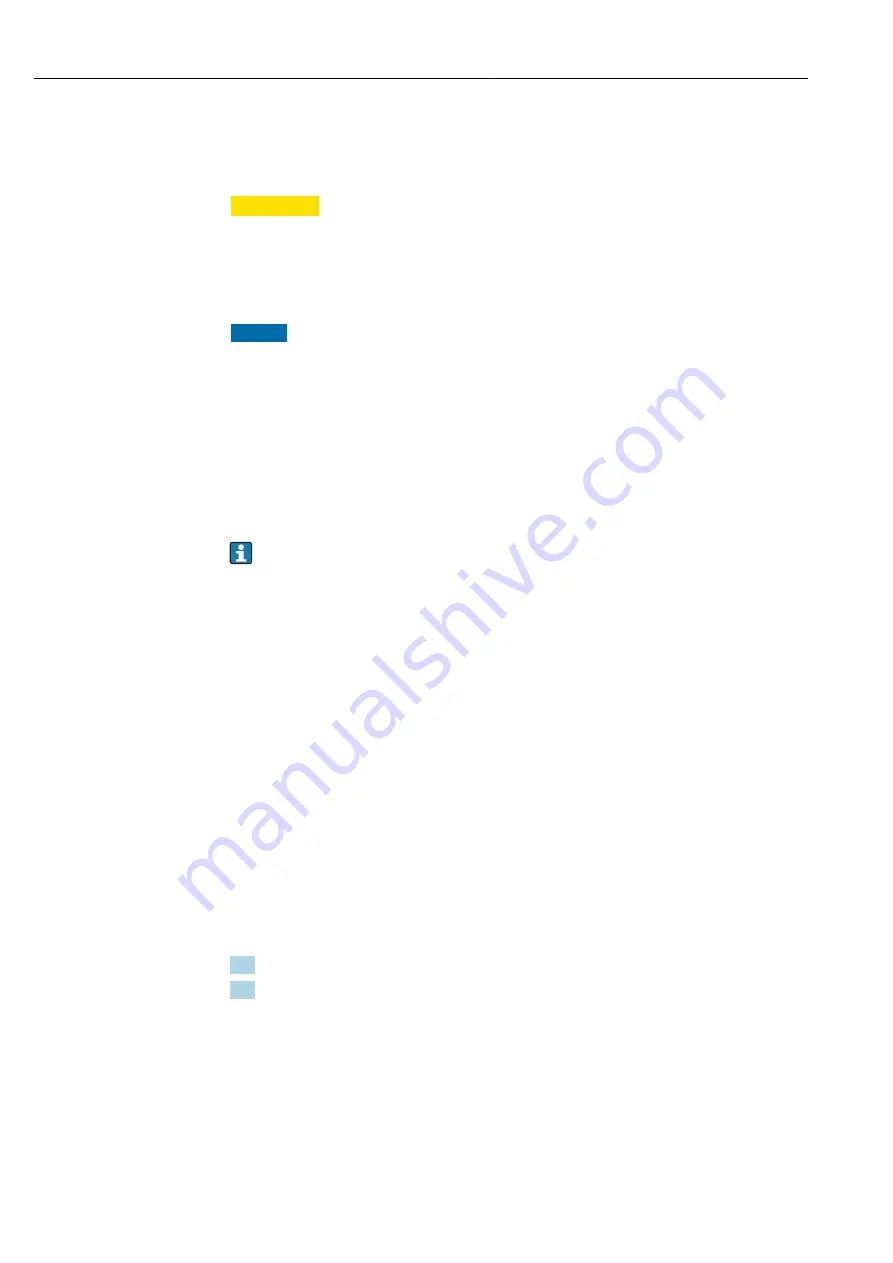
Installation
Flowfit CYA27
18
Hauser
5.3
Mounting assembly in the process
5.3.1
General installation instructions
L
CAUTION
Risk of injury from high pressure, high temperature or chemical hazards if process
medium escapes.
‣
Wear protective gloves, protective goggles and protective clothing.
‣
Install the assembly only in vessels or pipes that have cooled down, are empty and
unpressurized and have been rinsed.
NOTICE
If the return lines are insufficiently sized, ascending, are too long or are incorrectly
laid, there is a risk of excessive counterpressure in the assembly. This may impair or
completely disrupt the functioning of the assembly and particularly the sensors,
which may in turn cause further harm.
‣
Keep return lines as short as possible and avoid unnecessary flow resistance as well as
rising pipes.
‣
Return lines should be designed, dimensioned and laid in compliance with the pressure
specifications of the assembly and sensors.
‣
Short return lines with an open outlet are preferable, particularly for assemblies with a
large number of modules.
• Due to its low
flow rates
, the assembly is not suitable for mounting directly in the
process line. It must instead be installed in a
branch pipe
or a
bypass
. It is the
responsibility of the user to select and test the appropriate type of process
connection.
• If the
process pressure
is above 4 bar (58 psi) relative, the use of a
pressure-
reducing valve
upstream from the assembly is required. The pressure-reducing
valve should be configured in accordance with the pressure specifications of the
sensors or assembly. The lower pressure here is the maximum permitted set
pressure.
• If
solid particles
are present in the medium, this can affect the correct function of
the assembly and sensors. It is recommended to install a particle filter/dirt trap with
a mesh size of 500 µm upstream from the assembly. Please note here that the filter
must also be maintained at regular intervals to ensure proper functioning.
• The
connecting lines
(pipe or hose lines) must be selected or dimensioned so that
they can withstand the process medium, temperatures and pressures. Pay attention
to the technical specification of the assembly and sensors.
• The
connecting lines
(pipe or hose lines) must be connected to the process
connections of the assembly without force or tension. If necessary, provide
appropriate strain relief devices.
• Prior to installation, check the
flange seal
between the flanges.
5.3.2
Process connection at the assembly
1. Mount the assembly on a vertical surface.
2. Connect the medium using the usual commercial connection fittings. Depending on
requirements, use conventional sealing materials, e.g. thread sealing tape or O-ring
(recommended) made of suitable material, e.g. FKM.
















































